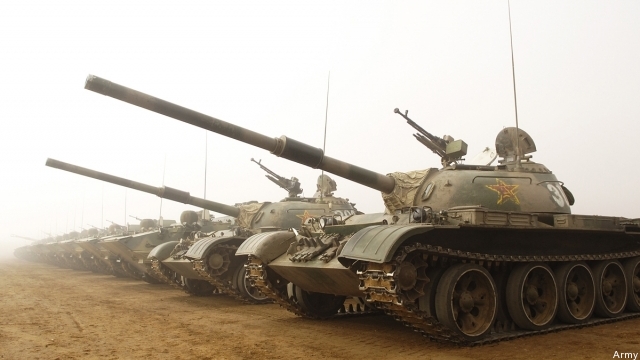Unclassified Net Assessment of China, US And Japan Released By Carnegie
Posted on
 WASHINGTON: The Carnegie Endowment for International Peace just released what a spokesman calls the “the first and only unclassified strategic net assessment of the future security dynamic between China, Japan, and the United States-including relative military capabilities and domestic and external variables.”
WASHINGTON: The Carnegie Endowment for International Peace just released what a spokesman calls the “the first and only unclassified strategic net assessment of the future security dynamic between China, Japan, and the United States-including relative military capabilities and domestic and external variables.”
For those who don’t wallow deeply in the Pentagon’s unique world, a net assessment is a pretty rare bird. A net assessment is not based on a war game or derived from operations research. It includes those elements and more. One expert described it this way: “Scenarios, war games, trend analysis, and considered judgment are the methods most widely used in net assessment studies and analyses.”
So this is a big picture analysis of the military players in Asia. Given that the United States is pivoting to Asia and our military strategy is focused on the region, this study can only help inform policymakers in the White House, Congress, the Pentagon and the Intelligence Community. The fact is is unclassified is a boon to all. This allows everyone to discuss the findings. Classified assessments may be sexy but they are inherently limiting and often leave out exactly what a net assessment is supposed to include — the personal elements, the bureaucratic influences and, perhaps most importantly, the likely actions and interests of the players over time.
Andy Marshall, known as the Yoda of the Pentagon to many of those who are not his acolytes, founded the Office of Net Assessment. Marshall’s office’s analyses were a prime driver behind our Pacific pivot. Read on for the authors’ attempts to offer the public a balanced and in-depth analysis of the interests and capabilities of the Pacific players.
Here are the report’s Key Findings, according to a summary provided by Carnegie.
- “The most likely potential challenge to the U.S.-Japan alliance over the next fifteen to twenty years does not involve full-scale military conflict between China and Japan or the United States – for example, one originating from Chinese efforts to expel Washington from the region.
- “The likeliest challenge instead stems from Beijing’s growing coercive power – increasing Chinese military capabilities could enable Beijing to influence or attempt to resolve disputes with Tokyo in its favor short of military attack.
- “An increase in the People’s Liberation Army’s presence in airspace and waters near Japan and disputed territories could also heighten the risk of destabilizing political-military crises.
- “Significant absolute and possibly relative shifts in the military balance between China and the alliance in Japan’s vicinity are likely.
- “In the most probable future scenarios facing these three actors, the U.S.-Japan alliance will either only narrowly retain military superiority in the airspace and waters near Japan or the balance will become uncertain at best.
- A significant drop in the potential threat posed by China is also possible if the Chinese economy falters and Beijing redirects its attention and resources toward maintaining internal stability.
- More dramatic shifts in the strategic landscape are unlikely in the fifteen- to twenty-year time frame. Such shifts include an Asian cold war pitting a normalized U.S.-Japan alliance against a belligerent China and a major withdrawal of U.S. presence that heralds either the dawning of a Sino-centric Asia or the emergence of intense Sino-Japanese rivalry with Japanese nuclearization.”
Subscribe to our newsletter
Promotions, new products and sales. Directly to your inbox.
